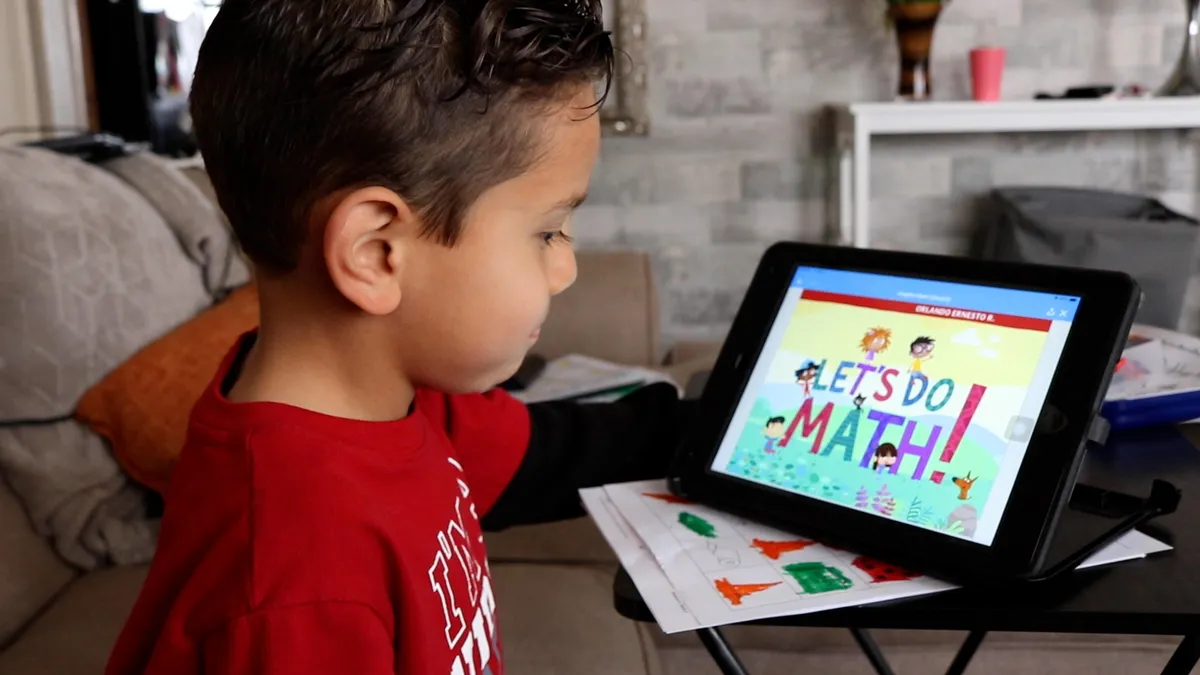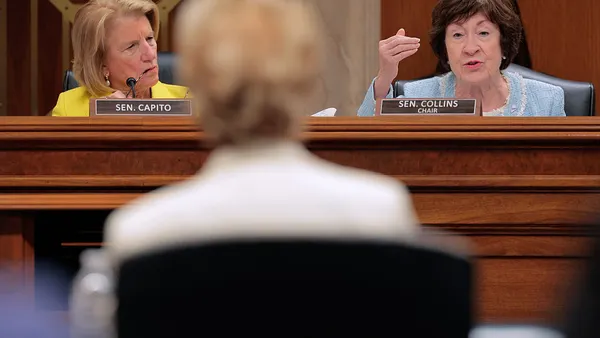When the global health emergency forced school systems to find immediate solutions for at-home learning access, some viewed that time as a failure, with students struggling to connect virtually or encountering less-than-robust online learning content.
But Chiefs for Change CEO Mike Magee doesn't see it that way. He says that experience created momentum to improve at-home internet accessibility so students from all backgrounds can access essential learning content outside the school day. If schools continue to invest in thoughtful solutions and improvements to the digital divide, he said, the benefits will continue for the next generation of students.
"What we have observed across Chiefs for Change membership is education chiefs really looking to improve what got created during the pandemic around virtual learning," Magee said. That doesn't mean virtual learning should replace in-person learning, but rather that virtual learning options — such as completing homework remotely or connecting with online tutors — hold promise for equitable educational opportunities, he said.
"We're really just at the beginning of this," he said.
Here, administrators from two school districts — the 32,000-student Ector County Independent School District in Odessa, Texas, with 42 schools, and Arlington Public Schools in Virginia, with 27,000 students and 41 schools — share their advice based on what they learned about keeping students and staff connected and how they're keeping their efforts going.
Work with partners
The Ector County district has one of the most unique partnerships in its attempt to bring high-speed, reliable internet to students' homes: It works with regional partners and SpaceX to transmit internet from the company's Starlink satellite system.
Starting in early 2021, the Ector County-SpaceX program began serving 45 families living in remote localities where there was no broadband infrastructure.
Since the beginning of the pandemic, more than 1,000 families have been connected to high-speed internet through a variety of local initiatives, said Ector County ISD Superintendent Scott Muri.
Continuing the learning process from home, whether it's doing research for a class assignment or collaborating on a project or presentation, has become essential, Muri said.
"It's fascinating to learn how dependent we've become as a society on high-speed broadband, and when you don't have that, you are missing out on many opportunities, not just educational opportunities, but opportunities that are part of our everyday life," he said.
Muri said partnerships are critical in trying to address immediate and sustainable internet access needs. The district is part of the area's connECTOR Task Force — along with hospitals, businesses, government agencies and others — to bring high-speed, affordable internet access to every family in Ector County.
"We all understand that we all have the same need, and it just makes sense to all work together to make this happen for our community," he said.
Look at the data
Unlike the partially remote Ector County ISD, Arlington Public Schools is an urban district that borders Washington, D.C. But it too has student connectivity challenges, Rajesh "Raj" Adusumilli, assistant superintendent for information services, told participants at the Consortium for School Networking conference, held this week in hybrid format.
Adusumilli said that when the pandemic emerged two years ago, the district was prepared to provide 1-to-1 devices to students and had a well-developed learning platform. Yet it was "caught off guard" by the internet connectivity struggles, he said.
Officials there attempted several solutions, such as providing families with codes to connect to the internet, sponsoring WiFi hotspots and trying to arrange teacher workspaces in their home communities. But it was a district-developed dashboard showing student engagement with the learning platform that really helped drive the district's efforts at identifying which students still needed support, Adusumilli said.
The dashboard shows how often each student uses their device or how long they are connected to the district's learning apps and platforms. School personnel can view the dashboard to see which students had lower rates of engagement — useful information for helping schools make personal connections with families and offer resources and supports, he said.
Communicate with stakeholders
Arlington Public Schools also made a big push to communicate with families that staff were there to help those struggling to connect or engage online.
Announcements were broadcast on local television stations, public service communications were created in English and Spanish, and the district even set up information tables outside apartment buildings, Adusumilli said. In some cases, educators knocked on families' doors to spread the message about available resources.
"All of this was possible not because of one person or not because of one department. It actually took a whole district to get together to do that," he said.
Adusumilli pointed to the need to share messages about the importance of technology in education. Even though some may have "technology fatigue" in the wake of remote and hybrid learning, he said, technology in education is the "new normal."
"If we don't focus on that, we will not be able to sustain the future," he said.
Be ready for more challenges
Adusumilli and Muri both spoke about how their school systems kept pushing for internet connection and engagement improvements even as some solutions hit barriers.
In Arlington, for instance, progress was initially made on connecting each home or apartment unit to the internet. Then officials realized some home units had multiple families needing separate connections and accounts, which led to another program to ensure connections for each family, Adusumilli said.
Meanwhile, Ector County found that some families who received SpaceX satellite dish kits to connect to high-speed broadband did not open the box or install the equipment. In trying to understand why, the district learned those families needed help with installation. As a result, the district hired a company to do that at no cost.
Finding remedies for ongoing connection barriers will be vital for solving the digital divide, Muri said.
"We've learned that just because something is free, [it] doesn't necessarily mean that people want it or even understand the benefit that it can have for their family, and so we've had to engage in educating some of our families," he said













